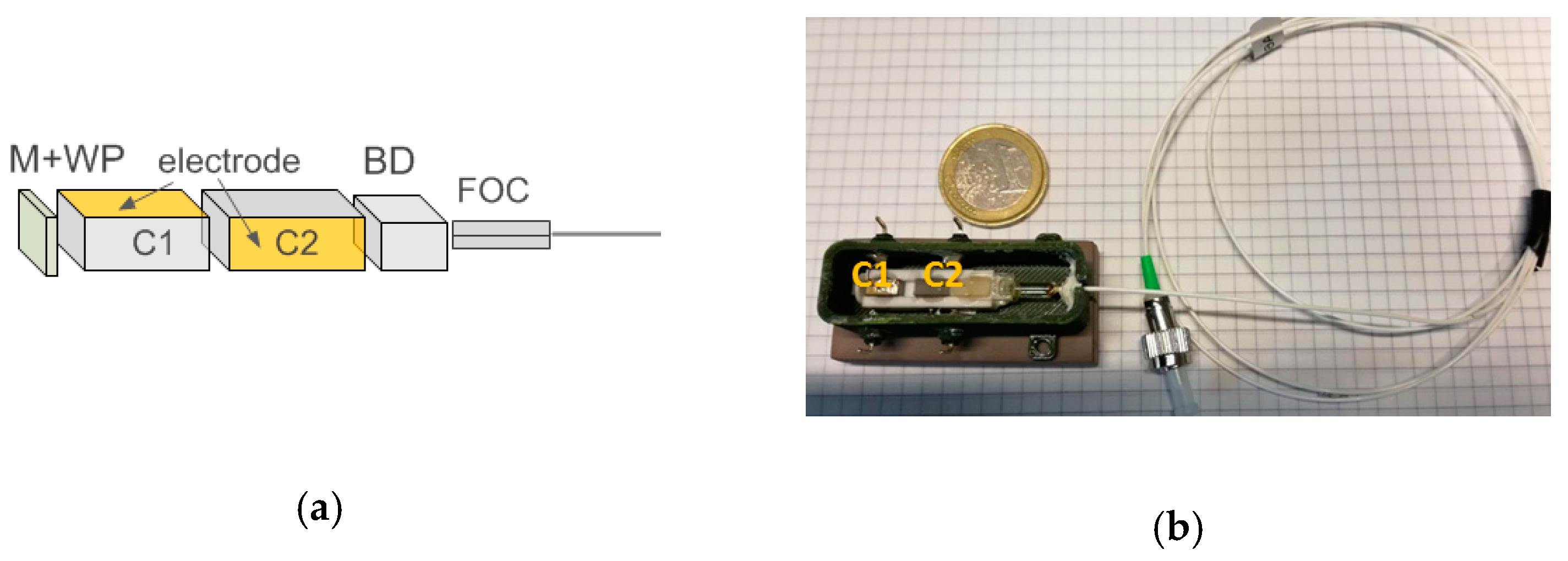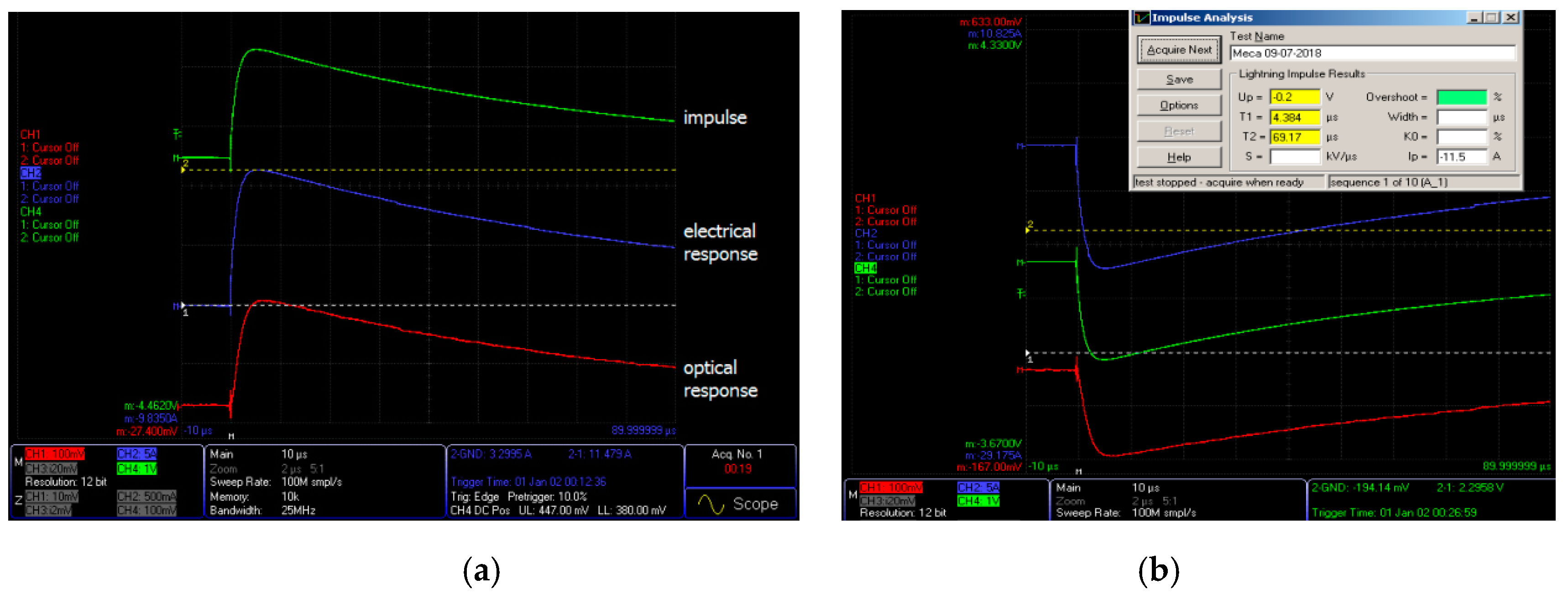Optical Voltage Transducer for Embedded Medium Voltage Equipment: Design and Parameters Optimization †
Abstract
:1. Introduction
2. OVS Sensor Design Optimization
3. Results and Discussion
4. Conclusions
Author Contributions
Funding
Conflicts of Interest
References
- IEA Int. Energy Agency Report 2017 Digitalization & Energy. Available online: https://www.iea.org/publications (accessed on 5 November 2017).
- Bohnert, K.; Wildermuth, S.; Frank ABrändle, H. Fiber-optic voltage sensor using fiber gyro technology. In Proceedings of the Eurosensors XXIV Conference, Linz, Austria, 5–8 September 2010; pp. 1091–1094. [Google Scholar]
- Pan, F.; Xiao, X.; Xu, Y.; Ren, S. An Optical AC Voltage Sensor Based on the Transverse Pockels Effect. Sensors 2011, 11, 6593–6602. [Google Scholar] [CrossRef] [PubMed]
- Fusiek, G.; Nelson, J.; Niewczas, P.; Havunen, J.; Suomalainen, E.-P.; Hällström, J. Optical voltage sensor for MV networks. In Proceedings of the 2017 IEEE Sensors, Glasgow, UK, 29 October–1 November 2017; pp. 1–3. [Google Scholar]
- De Maria, L.; Pistoni, N.C.; Bartalesi, D. Combined optical sensor and capacitor voltage divider arrangement for Voltage control in Medium Voltage Switchboard. In Proceedings of the Eurosensors XXX, Budapest, Hungary, 4–7 September 2016; pp. 1597–1600. [Google Scholar]
- International Electrotechnical Commission. IEC 60044-7 Instrument Transformers—Part 7: Electronic Voltage Transformers. Additional Requirements for Electronic Voltage Transformers; IEC: Geneva, Switzerland, 1999. [Google Scholar]
- International Electrotechnical Commission. IEC 60060-2 High Voltage Test Techniques; IEC: Geneva, Switzerland, 2010. [Google Scholar]



© 2019 by the authors. Licensee MDPI, Basel, Switzerland. This article is an open access article distributed under the terms and conditions of the Creative Commons Attribution (CC BY) license (https://creativecommons.org/licenses/by/4.0/).
Share and Cite
Maria, L.D.; Bartalesi, D.; Brambilla, R.L.; Pistoni, N.C.; Orrea, A. Optical Voltage Transducer for Embedded Medium Voltage Equipment: Design and Parameters Optimization. Proceedings 2019, 15, 17. https://doi.org/10.3390/proceedings2019015017
Maria LD, Bartalesi D, Brambilla RL, Pistoni NC, Orrea A. Optical Voltage Transducer for Embedded Medium Voltage Equipment: Design and Parameters Optimization. Proceedings. 2019; 15(1):17. https://doi.org/10.3390/proceedings2019015017
Chicago/Turabian StyleMaria, Letizia De, Daniele Bartalesi, Roberto Luigi Brambilla, Natale Claudio Pistoni, and Andrea Orrea. 2019. "Optical Voltage Transducer for Embedded Medium Voltage Equipment: Design and Parameters Optimization" Proceedings 15, no. 1: 17. https://doi.org/10.3390/proceedings2019015017
APA StyleMaria, L. D., Bartalesi, D., Brambilla, R. L., Pistoni, N. C., & Orrea, A. (2019). Optical Voltage Transducer for Embedded Medium Voltage Equipment: Design and Parameters Optimization. Proceedings, 15(1), 17. https://doi.org/10.3390/proceedings2019015017



